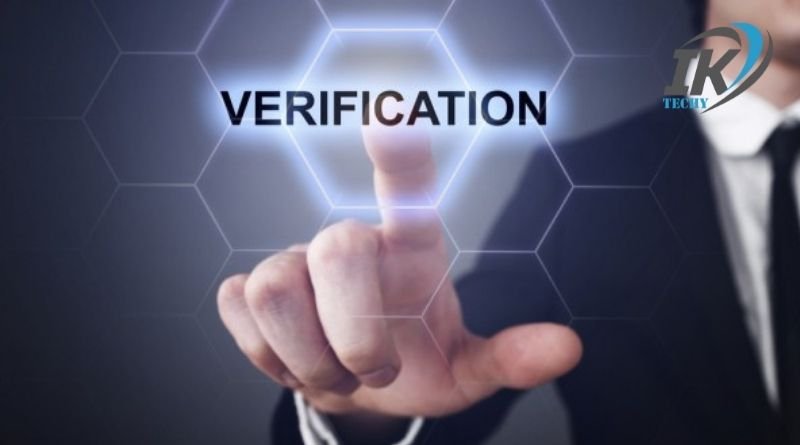5 ID Verification Methods Businesses Can Use To Stay A Step Of Criminals

Digital transformations have brought about several shifts ranging from changes in operations type to eliminating the physical visits. However, this was not it, the criminals alongside have become sophisticated and technologically equipped. This has increased the chances of identity-related risks. As per GovTech, the total number of global identity data breaches has surpassed previous records with more than 5 million cases reported so far. This has increased the need for identity authentication services.
Hence businesses should employ digital identity verification services to counter fraudulent threats. Today’s advanced form of ID verification ventures beyond conventional and human-involved methods of identification. Integrating forward-thinking identity verification technology is massively becoming popular among industries for authentic identity checks. This is so because digital services use various identification methods to minimize the chances of criminal dodging and enhance customers’ experience. The blog provides an overview of the various methods that digital identity verification services use to verify customers and prevent criminal activities.
Most Common Method Provided by Digital Identity Verification Services
Digital identity verification services offer a variety of encrypted and automated methods that provide diverse and efficient solutions. However, the methods are evolving with time and the present ones are considered to be accurate and authentic. These methods compare, analyze, and cross-matches the data of customers against the verified data set to ensure that they are who they claim to be in the real world. Below are the commonly used methods.
-
Verification of Govt-issued Identity Documents
Identity documents verification is the simplest among all of the methods. The process includes identity authentication of customers through validating govt-issued documents. These include ID cards, green cards, driver’s licenses, and passports. When the customers land on any platform for registration the system asks them to upload their documents either in form of pictures or show them during a live call. Afterward, the technology extracts and validates data through OCR technology. This way industries can check whether the documents are real, camouflaged, forged, or fake.
The system, for authentic document verification, validates the watermarks, holograms, signatures, format, spacing, fonts, and their positioning. Ultimately, the industries can assure real-time authentication identity verification, while fetching the results in less time, and ensuring customer satisfaction.
-
Identity Verification Through Database Method
The ID verification through matching against databases and other sources. The systems obtain information like name, date of birth, social security numbers, and proof of address from global databases and use it for cross-checking with the provided information. This method is more extensive than the other methods however, it ensures a definitive match faster
-
Biometrics Identity Verification System
Another popularly emerging method is a biometrics identity verification system, employed by industries to build an authentic and enhanced business-to-consumer relationship. The verification includes identity checks based on a real-time photograph or video uploaded by customers. The 3D in-depth technology creates a face map and cross-matches it with the one on uploaded documents. As per Shufti Pro News, biometrics-based identity verification services are massively growing because every customer has unique features like facial traits, digital signatures, and fingerprints. Therefore, digital services make it hard for criminals to bypass.
-
Liveness Detection
While during biometric verification, the system compares a real-time selfie with the govt-issued document, the liveness detection method takes it a step further. This is so as it validates the background, surroundings, and movements in the video uploaded by the customer. Moreover, the system also can verify fingerprints by scanning blood flow and sweat pores. Liveness detection-based digital onboarding fights against spoofing attacks – where fraudsters use face masks and appear as imposters. So much so, the system can detect audio deep fakes – where criminals use voice changer software to camouflage identity.
Furthermore, the liveness detection software uses voice, body language, texture, and movement analysis to ensure that the customer is not uploading pre-recorded video. Therefore, industries can use this method to readily verify customers.
-
Knowledge-Based Authentication (KBA)
Knowledge-based authentication is the type of method widely used for identity theft protection. The process involves the system asking questions relying on knowledge from the customers. The questions are primarily based on the information existing in the provided credentials. KBA is subcategorized into two categories.
-
Static KBA
A static KBA is considered to be less secure as the questions can be answered by an imposter who has enough knowledge of the legit customers’ life. For instance, mother’s maiden name, last name, favorite car, and more. Furthermore, criminals can easily access static KBA-based information from the black market.
- Use of EDR
What is EDR? EDR is a relatively new category of cybersecurity tools designed to give organizations better visibility of their endpoints, automatically detect potential security threats, and reduce incident response times.
-
Dynamic KBA
On the contrary, dynamic KBA ensures a higher level of authenticity because it involves diverse questions. None of the questions are general so there are fewer chances of hacks like those in static KBA. The questions mainly rely on transaction records, credit histories, mortgages, and account details.
In Summation
As Shufti Pro Funding highlights, various industries are using identity verification services. They are backed by AI technology and provide various methods which make it tough for criminals to bypass verification processes. Ultimately, businesses can ensure better customer experience while uplifting the overall status.







